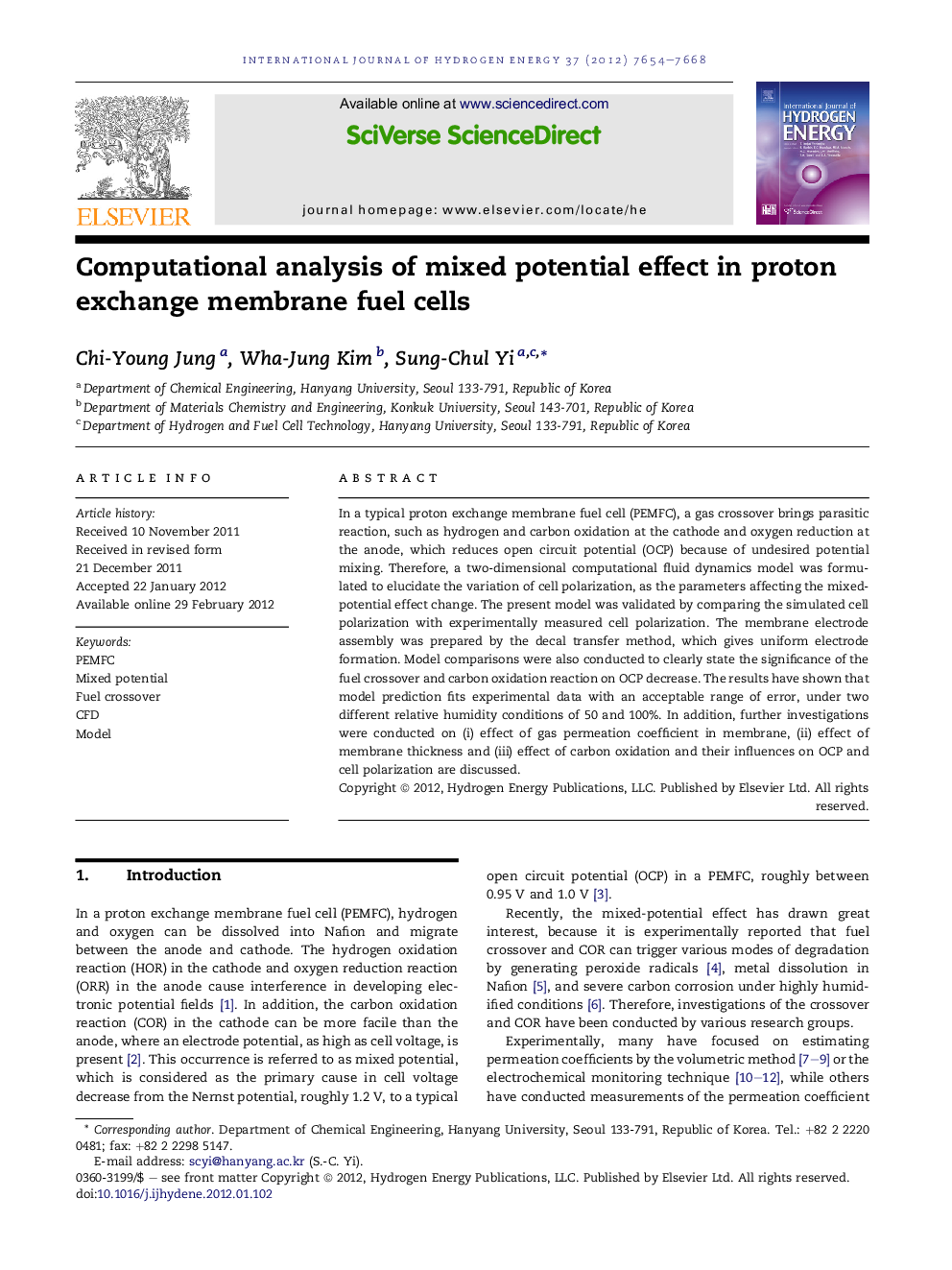| Article ID | Journal | Published Year | Pages | File Type |
|---|---|---|---|---|
| 1278569 | International Journal of Hydrogen Energy | 2012 | 15 Pages |
In a typical proton exchange membrane fuel cell (PEMFC), a gas crossover brings parasitic reaction, such as hydrogen and carbon oxidation at the cathode and oxygen reduction at the anode, which reduces open circuit potential (OCP) because of undesired potential mixing. Therefore, a two-dimensional computational fluid dynamics model was formulated to elucidate the variation of cell polarization, as the parameters affecting the mixed-potential effect change. The present model was validated by comparing the simulated cell polarization with experimentally measured cell polarization. The membrane electrode assembly was prepared by the decal transfer method, which gives uniform electrode formation. Model comparisons were also conducted to clearly state the significance of the fuel crossover and carbon oxidation reaction on OCP decrease. The results have shown that model prediction fits experimental data with an acceptable range of error, under two different relative humidity conditions of 50 and 100%. In addition, further investigations were conducted on (i) effect of gas permeation coefficient in membrane, (ii) effect of membrane thickness and (iii) effect of carbon oxidation and their influences on OCP and cell polarization are discussed.
▶ Mixed-potential effect is investigated using general computational fluid dynamics model by taking both fuel crossover and carbon oxidation reaction into account. ▶ Heyrovsky-Volmer and Tafel-Volmer kinetics on the agglomerated catalyst structure are considered. ▶ The model is validated by comparing cell polarization of decal-transferred MEA. ▶ Effect of fuel permeation coefficient through Nafion membrane is investigated. ▶ Relation between membrane thickness and the open circuit potential during typical PEMFC operation is numerically predicted.
